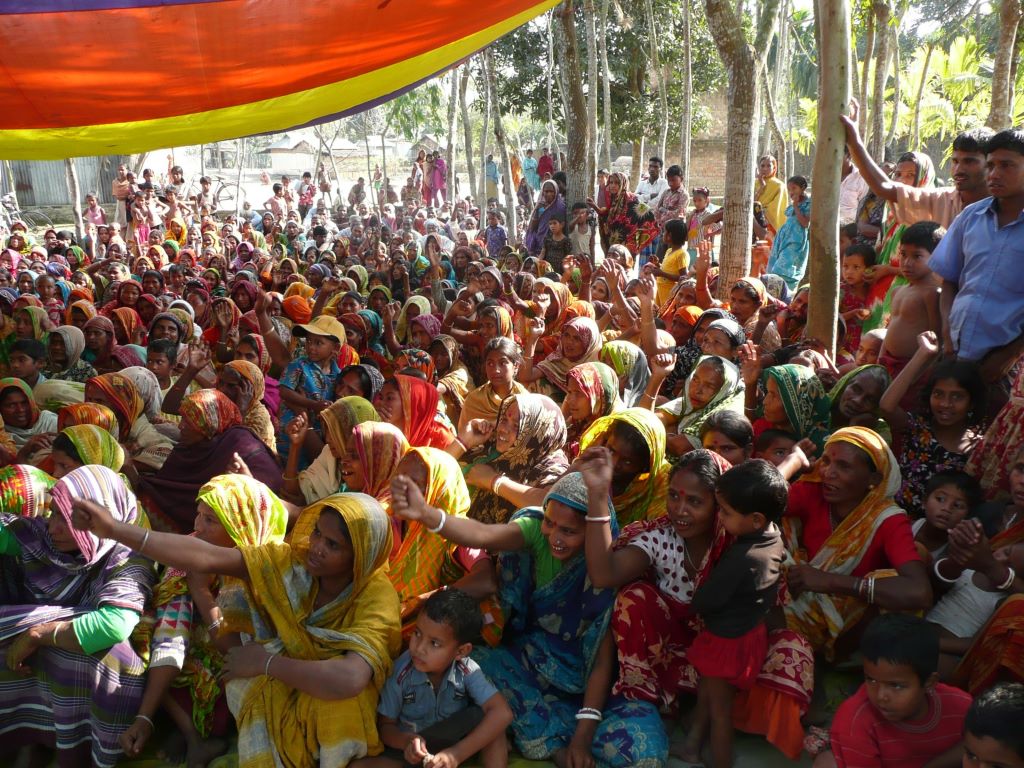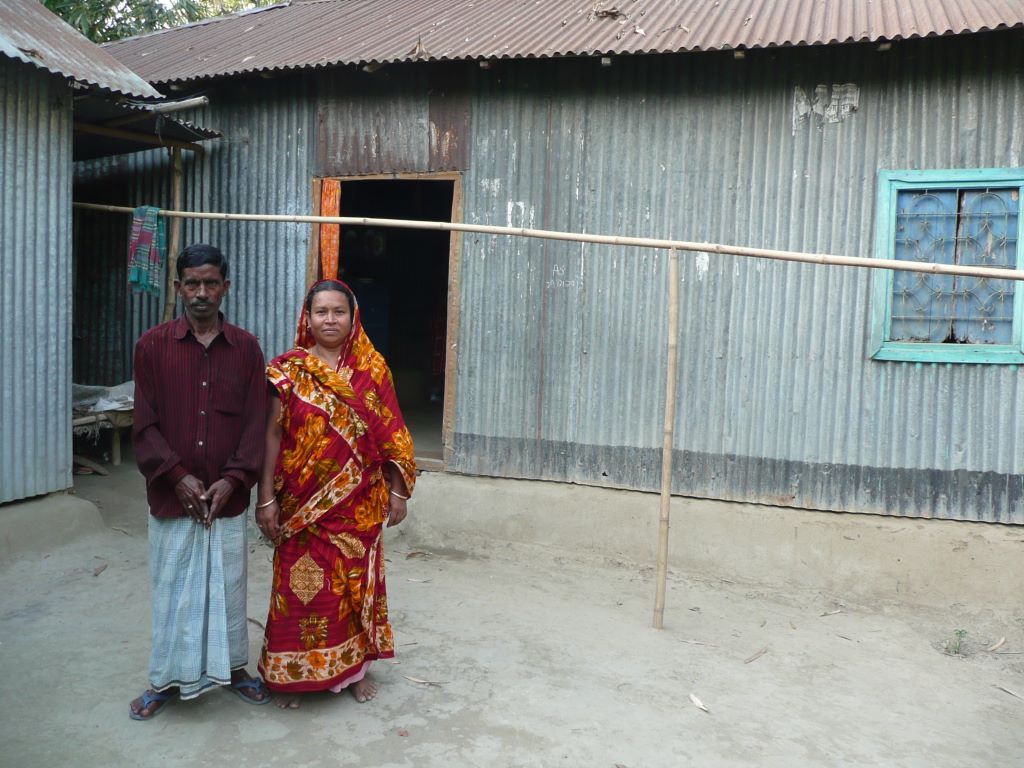Microcredits – no silver bullet against poverty

In January, the Bangladesh Institute of Labour Studies surveyed more than 400 textile workers, some of whose products are made for Western fashion brands. It found that they are not only paid too little; 70 percent of the nearly five million workers are also deeply in debt, including to microlenders.
At the equivalent of 70 euros, the monthly minimum wage isn't enough to cover living costs, and so at the end of the month many of them have to borrow money: from relatives, friends, loan sharks, or by taking out microloans from institutions like Grameen Bank. Some people's debt amounts to seven times their minimum wage. And profiting from this, among others, are more than 700 banks and microfinance institutions.
According to the founder of Grameen Bank, economist Muhammad Yunus, microcredits should long since have reduced poverty in Bangladesh. In 2006 he became the first banker to be awarded the Nobel Peace Prize. "Lasting peace cannot be achieved unless large population groups find ways in which to break out of poverty," the jury said. "Microcredits are one such means".
"We lend money to people living in extreme poverty, so that they can create an income for themselves. Microloans of up to 100 dollars, paid back in weekly instalments," as Yunus said in his acceptance speech.
"We don't require collateral. You don't need lawyers. And yet the rate at which they are paid back is very high, at 98-99 percent." Microfinance is very important, he went on, "because it enables people to take the initiative themselves, develop their own skills and liberate themselves from poverty."

Microcredits rather than a welfare state
Something that wasn't mentioned at the prize ceremony: the high interest rates of 20 percent, plus fees. Or the fact that the mostly male debt collectors apply substantial pressure to people who default on their repayments – if they haven't already caved to pressure from the group that all borrowers have to form, which is then jointly liable for the money.
If one member regularly fails to come up with their weekly repayment, none of the others will get another loan.
"If my child gets sick, I don't dare tell my neighbour," says Sufia Begum from Kandha Para, a village in Tangail District. "Because that might mean I'll buy medicine for my child rather than make the repayment." And that will get her into trouble with the others. Sufia Begum isn't the only one who has difficulty repaying her loan.
"There are very few people from our village who have actually managed to escape poverty," she says. "For most – I'd say three-quarters – microloans don't get them anywhere. I see the misery," adds Rikha Begum, who lives in the same village. "The group members argue a lot among themselves, people have sleepless nights when the payments are due." This is why she has never taken out a loan herself.

She is admittedly one of the better-off villagers; her husband buys fruit and vegetables in the village and sells them to the nearby hypermarket. They also make some money from their own land. Others more quickly find themselves forced to get into debt: for medical treatment, for their children's education, or simply to feed their family.
Only a few use a microloan to start an enterprise that will generate an income, but this is of no interest to the money lenders from Grameen Bank and other institutions – just as long as the repayments are made.
Women have always formed a large part of Grameen Bank's customer base. "Women are more compliant and easier to control; this is the image of women and people in general that lies behind the current dominant practice of giving microloans to women," says Farida Akhter, a women's rights campaigner in Bangladesh. "It doesn't happen because Grameen Bank and the other MFIs particularly want to help women; they're just more reliable than men at making repayments."
Since winning the Nobel Prize, Grameen Bank has become a global model for many microfinance institutes, supported by numerous Western development ministries who, like Germany's KfW Development Bank, profit financially from the microloans.
It's a booming sector, with 150 billion dollars currently circulating in it worldwide, up from just 70 billion in 2010. And the prospects for investors are good: experts estimate that this figure could double again by 2026.
The welfare state as monster
Microcredit is a gigantic programme of redistribution, on both a national and an international level: Grameen Bank, for example, offers savings programmes and bonds on which it pays interest. Bangladesh's small, wealthy upper class in particular put their money into these schemes. And that money is then distributed to poor families as microloans.
Or foreign investors earn up to nine percent interest for money that they lend to microfinance institutes. So-called "ethical" investors from Europe and the USA are getting similarly high rates from microfinance institutes, although they only pay out up to two percent in dividends to their investors.
One thing is certain: it is borrowers in the countries of the global south who are generating interest for the investors with their loan repayments.
"In the United States I saw how the market liberates the individual and allows people to be free to make personal individual choices," writes Muhammad Yunus in his autobiography about his time studying in the USA in the early 1970s.
Public services are a thorn in his side. He says that, since government bureaucracy is not profit-driven, "it has no incentive to increase its efficiency. It has a disincentive: the government cannot cut welfare without public outcry, so the behemoth just continues, blind and inefficient, year after year."
The welfare state as a monster, a "behemoth" – this is the "Banker to the Poor" calling into question the only structures that provide relief and aid to poor people in capitalist societies. If he had his way, local and national state welfare organisations would no longer be needed and could be "done away with," he claims in his autobiography. Money would circulate to people living in all circumstances – "financial inclusion" is what this is called in modern "development policy".
In Bangladesh, Yunus claimed less than twenty years ago, "we can put poverty in the museums" by 2030 with the help of microcredit and entrepreneurship. The reality looks rather different. On 7 November, the Bangladeshi government set the new minimum wage at 106 euros. The unions called for double that – the amount that studies have found is required to live with human dignity in Bangladesh.
Over weeks of protests, three people died and countless others were injured, and many workers were prosecuted for participating in demonstrations and strikes. For those in employment, the new minimum wage means they have to keep on struggling to survive. They are forced to do excessive overtime, miss meals, or send their children to work instead of school. And to keep taking out more loans. A vicious circle.
Dominik Muller
© Qantara.de 2023
Translated from the German by Ruth Martin
